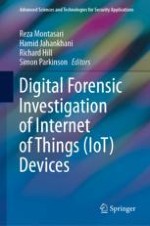
2021 | OriginalPaper | Buchkapitel
Emulation Versus Instrumentation for Android Malware Detection
verfasst von : Anukriti Sinha, Fabio Di Troia, Philip Heller, Mark Stamp
Erschienen in: Digital Forensic Investigation of Internet of Things (IoT) Devices
Aktivieren Sie unsere intelligente Suche, um passende Fachinhalte oder Patente zu finden.
Wählen Sie Textabschnitte aus um mit Künstlicher Intelligenz passenden Patente zu finden. powered by
Markieren Sie Textabschnitte, um KI-gestützt weitere passende Inhalte zu finden. powered by